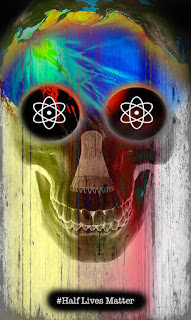Randy Credico- Live On The Fly
CLICK TO LISTEN TO SHOW
Tue, Jan 3, 2017 5:00 PM
FRANK SERPICO, CINDY SHEEHAN AND RAY MCGOVERN
Activists and WhstleblowersAnti War Activist Cindy Sheehan, Ex CIA analyst Ray McGovern and Ex NYPD detective Frank Serpico
BIOS (in order of appearence)
Cindy Lee Miller Sheehan was
born on July 10, 1957. She married Patrick Sheehan and the couple had
four children--Casey, Carly, Andy, and Janey. Casey was the oldest. The
whole family was active in the church; Cindy was once a Youth Minister.
They were a tightly knit family that, in Cindy´s words, “did everything
together.”
Cindy’s world changed forever when, on an April 4,
2004 missio in Sadr City, Iraq, Army Specialist Casey Sheehan was
killed. Cindy and other military families met with President George W.
Bush in June of 2004. By October, Cindy´s grief had led her to action.
She wrote, “I was ashamed that I hadn’t tried to stop the war before
Casey died…Well, I now felt that if I couldn’t make a difference, I
would at least try.”
Sheehan became one of the strongest, most
personal and persistent voices in the movement against the war in Iraq.
Her quest to end the war, bring soldiers home, and hold politicians
accountable for the decisions that sent the troops to Iraq in the first
place, has been indefatigable.
The American Friends Service
Committee created a traveling exhibition of combat boots, each pair
representing a U.S. military casualty. They invited Sheehan to speak at
the opening of the exhibit, titled “Eyes Wide Open: the Human Cost of
War”, which coincided with President George W. Bush´s second
inauguration in January 2005. At that event, Sheehan got the idea to
start an organization called Gold Star Families for Peace. Cindy said
this about the organization: “When a mom has a child killed in a war,
she becomes a Gold Star Mom. Well, we expanded the idea to include all
family members because an entire family is affected because of the
death.”
In early August of 2005, Cindy, or “Peace Mom” as she came
to be called, camped in a ditch near President Bush’s ranch in
Crawford, Texas. She requested a second personal meeting with the
president, who had declared that the fallen soldiers had died for a
“noble cause”. Cindy wanted to know exactly what that cause was, and to
demand an immediate end to what she viewed as an unjust and immoral war.
So
many people stopped by to show their support or join her camp that her
demonstration became known as “Camp Casey”. A few days later, one of
Bush´s neighbors offered the Camp Casey participants some land to use as
their base. Camp Casey became a regular protest event, popping up when
President Bush was in Crawford for holidays and vacations.
Between
Camp Casey operations, Sheehan traveled extensively to join anti-war
rallies and to meet with activists and leaders from around the world.
She is credited with having revived the anti-war protest, and being the
face for the peace and justice movement. Her published works include an
account of her first year of activism called Not One More Mother’s
Child, a collection of her writing and speeches, Dear President Bush,
and Peace Mom: A Mother’s Journey through Heartache to Activism.
RAY MCGOVERN was
a hell of a spy. For 30 years he was a top-level CIA operative who
prepared the President’s daily briefings and chaired the National
Intelligence Estimates. So when he retired in 1990, the CIA gave him a
prestigious medal for “especially commendable service” to the agency.
But outraged at the CIA’s flagrant and illegal use of torture, he
returned that medal in 2006 to become an antiwar activist, vigorously
exposing agency abuses and speaking out on behalf of people like Julian
Assange, Chelsea Manning and Edward Snowden. Now he is the CIA’s worst
nightmare, and was put on the State Department’s BOLO list (Be On the
Look Out), barely a heartbeat away from a jail cell. And, in fact,
he was thrown in jail, after being handcuffed and brutally beaten by
police for simply standing up and turning his back during a speech by
Hillary Clinton. Because Ray is such a powerful and persuasive speaker
against the vast unchecked power of the CIA and NSA, and how they
secretly shape U.S. domestic and foreign policy, he never stops
listening for that ominous knock on the door that might mean he will be
eating his future meals behind bars. With Donald Trump about to enter
the White House, that knock on the door seems more likely than ever. Ray
will talk with Randy about the dark days ahead, and why Presidents from
Clinton to Bush to Obama – and now Trump – are afraid of the CIA and
NSA and will not act against them even when they break the law.
Otherwise, as Ray has asked, “How else to explain why the National
Intelligence Director, who on March 12, 2013, lied under oath to the
Senate, was not fired as Director of National Intelligence?” [Note:
under Section 1621 of Title 18 it is a federal crime to lie to Congress
while under oath; and under Section 1001 it is a federal crime to lie to
Congress while not under oath. The penalty is a fine of up to $100,000
and/or up to five years in jail.]
Frank Serpico was
born in Brooklyn, New York. When he was eighteen, he enlisted in the
U.S. Army and served for two years in Korea. After military service, he
worked part-time and attended college, joining the New York City Police
Department at the age of twenty-three. His police career has been
well-documented in Peter Maas’s best-selling biography and in the
Academy Award nominated film, Serpico, in which Al Pacino portrayed him.
Serpico’s
career as a plainclothes police detective working in Brooklyn and the
Bronx to expose vice racketeering was short-lived, however, because he
swam against the tide of corruption that engulfed the NYPD during the
late sixties and early seventies. Not only did he consistently refuse to
take bribes for “looking the other way,” he risked his own safety to
expose those who did. In 1967 he reported to appropriate officials
“credible evidence of widespread, systemic police corruption.” It was
not until April 1970, however, when the New York Times published an
explosive story, that Mayor Lindsay took action and appointed the Knapp
Commission to investigate. As a consequence of his testimony before the
commission, Serpico was ostracized by his peers and, many believe,
ultimately “set up” to be shot during a drug raid in which he was
seriously wounded and his fellow officers did not call for assistance.
He
resigned from the NYPD and spent the next ten years living abroad,
recovering from his wounds, traveling and learning. In the early
eighties he settled in New York State.
Serpico continues to speak
out against both the weakening of civil liberties and corrupt practices
in law enforcement, such as the attempted cover-up following the Amadou
Diallo shooting in 1999. He provides support for “individuals who seek
truth and justice even in the face of great personal risk.” He calls
them “lamp lighters,” a term he prefers to the more common
“whistleblowers,” because it evokes memories of the historic ride in
which Paul Revere made a great deal of noise and caused the lanterns to
be lit.
















